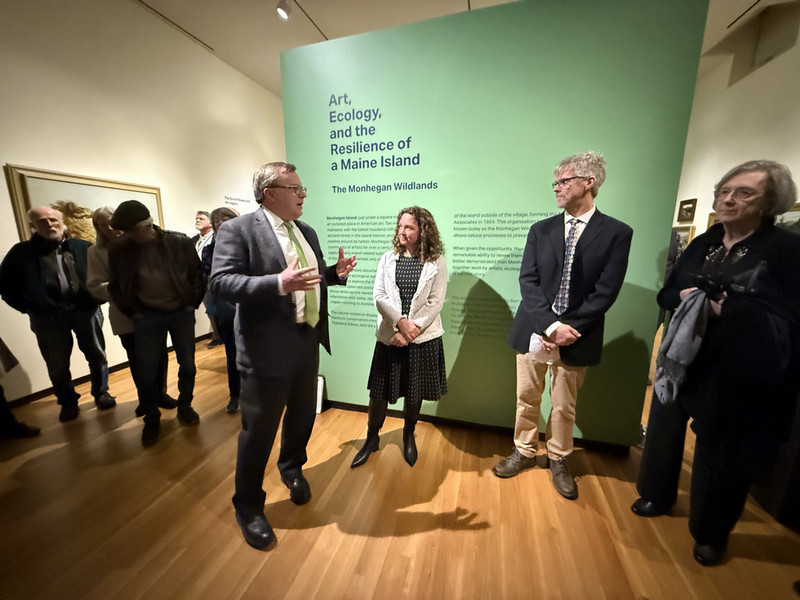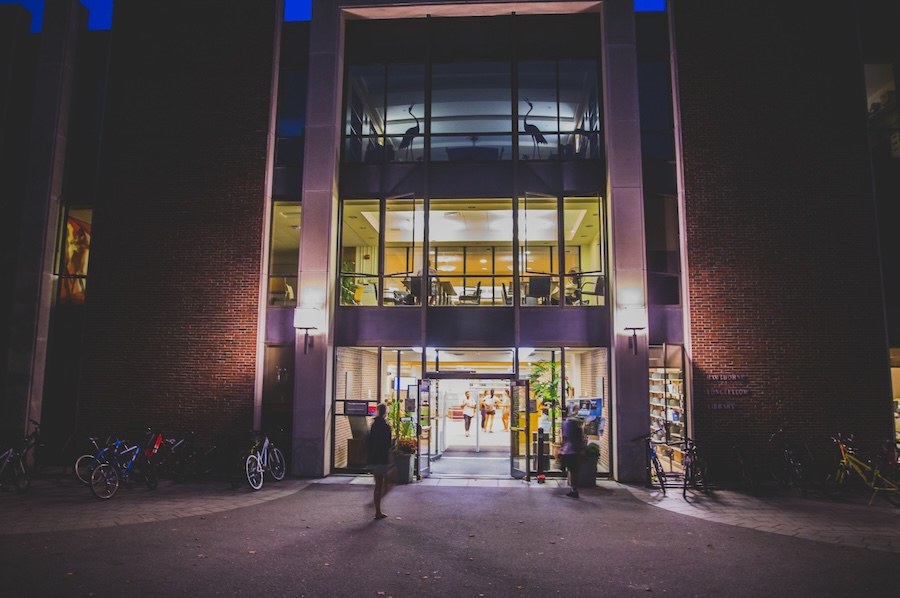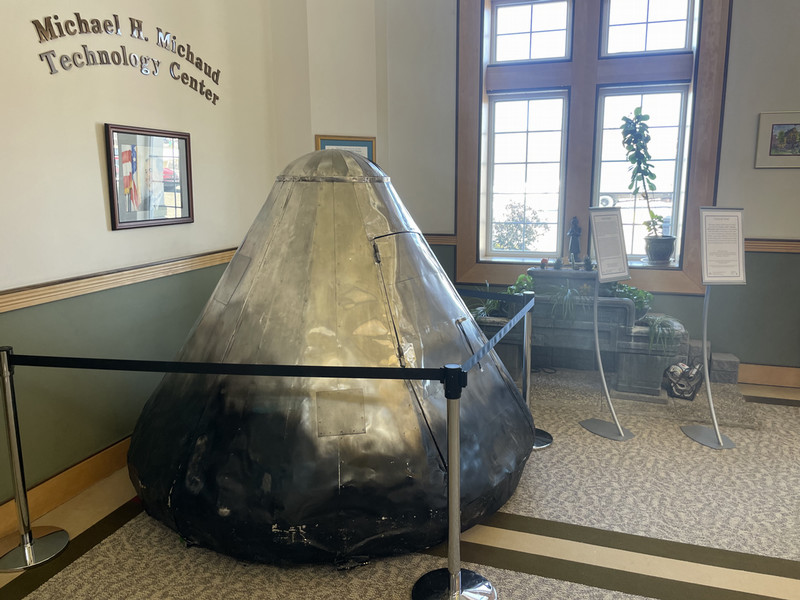Curators Offer Insight into ‘This Is a Portrait If I Say So’ Exhibition
By Rebecca GoldfineBowdoin College Museum of Art’s big summer/fall exhibition gathers a collection of portraits from 1912 to today that do not fit the conventional notion of portraiture. Not one of the show’s pieces relies upon a recognizable face—with two eyes, a nose, and a mouth—to convey identity. Instead each one suggests that physical appearance is not adequate to describe one’s self or others.
“This exhibition grew out of a collaboration between Kathleen Campagnolo, Jonathan Walz, and myself,” said Anne Collins Goodyear, co-director of the Bowdoin Museum of Art. “We became very interested in the phenomenon of portrait abstraction, or portraits without faces, as it emerged over the course of the past century.”
The new show, “This Is a Portrait If I Say So: Identity in American Art, 1912 to Today,” focuses on three periods: 1910-1930, the 1960s, and 1990-present day.
“Each of these periods marks a moment of significant social, political, technological, and scientific change,” Goodyear said. “During the 20th century, and up to the present, we witness many political, social, and aesthetic revolutions, the invention of pictorial abstraction, the emergence of two world wars, the development of new technologies and recently, even the decoding of the human genome.”
She continued, “All of these technologies and political events have left their impact on how we understand one other, and have made us increasingly aware of change and new strategies for representing the self.”
The exhibition’s name was inspired by Robert Rauschenberg´s 1961 portrait of gallerist Iris Clert, which is simply a telegram that states, “This is a portrait of Iris Clert if I say so.” Goodyear added, “Why was it that Rauschenberg could imagine that a telegram could be a portrait if he said it was? This is the phenomenon that this exhibition seeks to explore.”
1910s and 1920s
Jonathan Walz, director of curatorial affairs and curator of American art at The Columbus Museum in Columbus, Ga., chose the works for the show’s early period. He says that American artists of this generation were influenced by older forms of European portraiture.
“In Europe portraiture before the Renaissance, one way that identity was conveyed was through heraldry, which were shields with symbols easily interpretable from a distance,” he said. “Ideas like that were combined with avant-garde art movements, such as Cubism and Fauvism. American artists took that rich mixture of influences and made those ideas their own.”
The writer Gertrude Stein, who lived in Paris from 1903 to 1946, helped spread these ideas to American artists. She wrote innovative poetry that questioned the relationship between the writer and subject, and she described subjects through their actions rather than their appearance. “So it is like she is telling us that the self is always becoming, always in the process of being created,” Walz said.
Artists such as Charles Demuth, Marcel Duchamp, Marsden Hartley, and Man Ray—who are all included in this portion of the show—were inspired to take these ideas of abstract selfhood and put them in visual terms, Walz said.
1960s
Independent curator Kathleen Campagnolo put together the mid-century section of “This Is a Portrait If I Say So,” focusing on the tumultuous 1960s. In this era, the United States, after emerging from WWII, was grappling with new technologies, the women’s movement, the civil rights movement, and new ideas about identity.
“The 1960s saw an explosion of new forms of art making, including happenings, Fluxus, Pop art, conceptual art, minimal art, and new American dance,” Campagnolo said.
Many of the artists shown in the 1960s gallery of “This Is a Portrait If I Say So” were avant-garde figures who were not known as portraitists, according to Campagnolo, including Mel Bochner, Walter De Maria, Robert Morris, Yoko Ono, Robert Rauschenberg, and Jasper Johns.
This section of the show includes portraits of cultural innovators of that era, including art critic and historian Barbara Rose, composer John Cage, and dancer Viola Farber.
1990s to present
Anne Goodyear curated the final section of the show, which covers the recent past. Artists working in this period build on many of the strategies developed by earlier artists. Thematic techniques that appear in all periods represented by the exhibition include the use of language to describe identity and the use of symbolic forms to represent aspects of the self.
However, artists working in the past three decades have also entered new territory. “What distinguishes portraiture of the recent past is the recognition of the self as a porous structure,” Goodyear said. “Portraits in the final part of exhibition speak to a self that is not necessarily complete, but in the process of a continual evolution and transformation.”
Since 1990, Americans have been freer to explore, choose, and display who they believe themselves to be—ethnically, with respect to sexual orientiation, and in terms of gender-. “I think portraiture of the recent past emphatically suggests that the self is ours to craft,” Goodyear explained. “We have the ability to exert our own authority on how we wish to be represented.”
Portraits in this portion of the show, made by artists such as Janine Antoni, Roni Horn, Byron Kim, Glenn Ligon, Hasan Elahi, and L.J. Roberts, speak to a dynamic interplay between individuals and their environment, and depict a “self that is not fixed but in flux,” Goodyear said.



